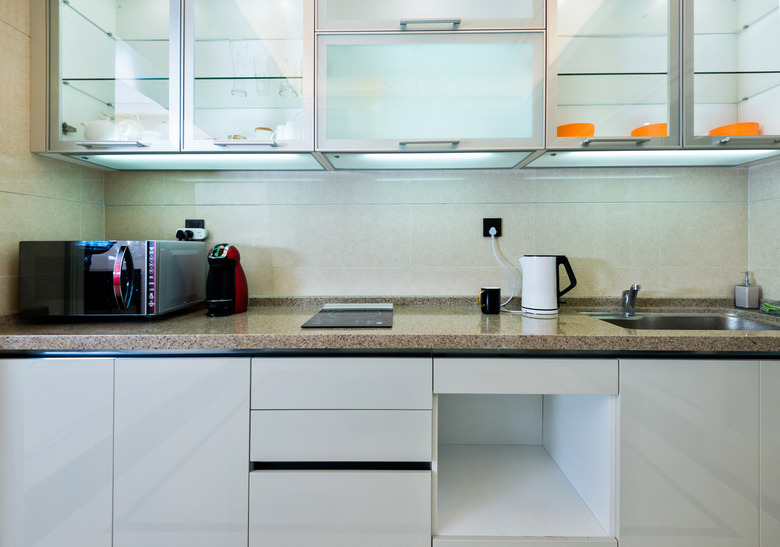Problems With Quartz Countertops
When it's time for a kitchen or bathroom remodel, many homeowners find themselves in the midst of the quartz vs granite countertop debate. Both start out as natural stone, but quartz countertops are made differently and include some man-made materials. This makes them a bit different than granite, marble and other natural stone products and can introduce some potential issues.
Discoloration Problems with Quartz Countertops
Discoloration Problems with Quartz Countertops
You must regularly seal granite countertops to prevent them from soaking up stains, because they are so porous. Savvy salespeople are quick to point out that quartz doesn't suffer this malady and can resist stains naturally. This is the truth, but it's not the whole truth.
When making granite countertops, large slabs of granite get mined from the earth, cut and polished into finished countertops. Quartz, however, is ground down into a fine powder, and then mixed with resins before being reformed into a countertop. Even though the stone itself resists staining, the resins used to make the countertop can vary greatly in stain resistance from one manufacturer to another. If you choose quartz, you'll need to clean up spills right away and remain vigilant just as you would with a granite surface.
Unfortunately, spills aren't the only source of stains. Quartz countertops change color when exposed to direct sunlight, making them a no-no for outdoor kitchens and grilling spaces. Bright, direct sunlight from your kitchen window can also cause discoloration on your granite countertop.
Playing it Cool
Playing it Cool
When it comes to heat resistance, the man-made parts of quartz countertops once again can cause issues. Quartz itself is very resistant to heat, but the resins used to make countertops are not. Placing a hot pan or baking dish directly on a quartz countertop can cause a permanent white discoloration or cloudy appearance.
The Benson Stone Company advises customers to avoid exposing quartz countertops to temperatures over 300 degrees Fahrenheit. To protect a quartz countertop, always use a trivet or hot pad just as you would on laminate. Always use a cutting board, as well, as quartz is susceptible to scratches.
This Doesn't Look Right
This Doesn't Look Right
Quartz countertops offer a clean, modern appearance that many homeowners love. Stone purists, however, often take issue with the look of quartz. Granite and marble countertops feature random veining patterns that only Mother Nature can provide. Manufacturers of quartz countertops can and do add this marbling effect to their products, but the patterns they use are never quite as random as what nature provides.
Seams, too, can create unsightly disruptions to your countertops. Wherever two slabs of countertop come together, they will form a visible seam. Professional installers do an excellent job of hiding and minimizing these seams, but there is no way to completely avoid them. If you have concerns, ask your installer to show you where they plan to put your seams and how they plan to disguise them.
Not a DIY Project
Not a DIY Project
Be they granite, marble or quartz, installing stone countertops is a do-it-yourself project only for the most ardent of weekend warriors. Installing quartz countertops requires a lot of precise measuring and a hefty amount of muscle power. According to the professional installers at the Top Shop in Canada, quartz countertop slabs weigh 20 to 25 pounds per square foot. This makes them difficult to carry and maneuver into place.
It's also important to note that you and your helpers aren't the only ones who will bear the burden of carrying this heavy stone. Your counters and floors must also be up to the task. If you install heavy quartz over a rotting subfloor, both you and the countertop could end up in the basement below the kitchen.
Depending on the pattern and color of the countertop you choose, hiding the countertop's inevitable seams may prove quite challenging. Some patterns and colors make seams harder to disguise than others, and doing a DIY install with a difficult pattern can, unfortunately, leave you with glaringly seams that require professional intervention.
